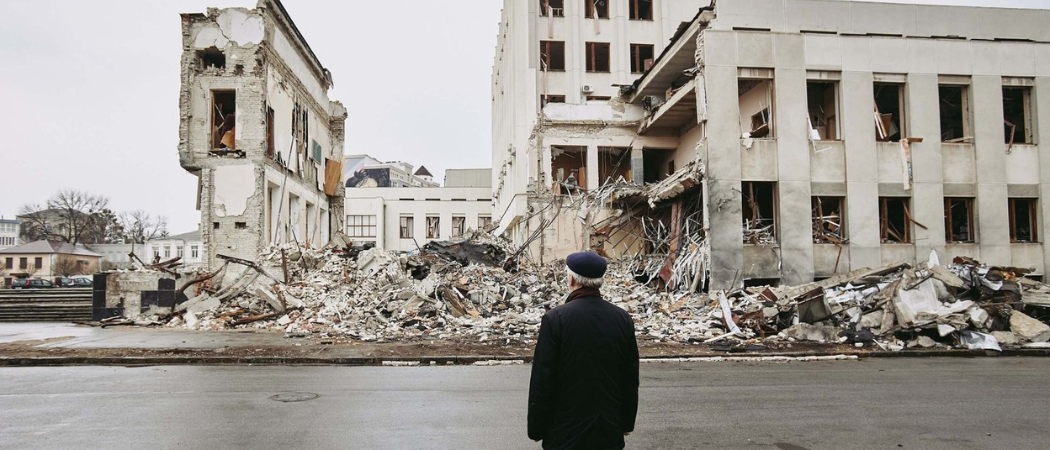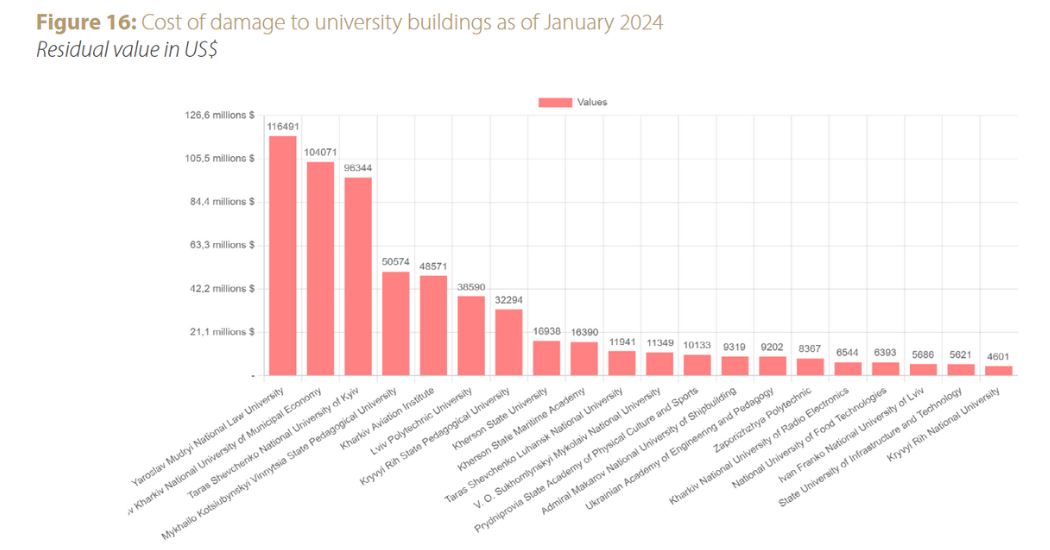A UNESCO report highlights the terrible impact that Russia’s invasion of the country has had on scientists, research institutions and scientific equipment

Karazin University. Photo: Science at Risk
The total cost of reconstructing Ukraine’s public science infrastructure currently stands at more than $1.26 billion (€1.15 billion), according to a study by UNESCO. Russia’s invasion in February 2022 has caused severe damage to Ukraine’s scientific institutions, especially its universities, and UNESCO is highlighting the need for further protection.
“As the situation becomes more and more critical for the scientific community, we must protect and support their research in Ukraine,” said Audrey Azoulay, UNESCO director general.
A total of 1,443 buildings linked to 177 institutions have been damaged or destroyed in the past two years, with the most affected located in Ukraine’s eastern Kharkiv region. Yaroslav Mudryi National Law University in the city of Kharkiv will need almost $120 million for building repairs alone. On top of this, restoring or replacing damaged scientific equipment will cost just over $45 million.
Ihor Lyman, a professor at Berdyansk State Pedagogical University, said in reality Ukraine will need much more than this to restore all of its scientific infrastructure. “The war is still ongoing and every week brings new damage to research infrastructure,” he told Science|Business.
A case in point, the National University of Kharkiv recently finished replacing the windows of one of its buildings after they were blown out by shelling, only for another missile to hit and shatter other windows.

While the UNESCO report catalogues structural damage, the real cost of the war on science is far broader. Lyman’s own situation exemplifies this. With Berdyansk under Russian occupation, Berdyansk State Pedagogical University has temporarily been moved to the city of Zaporizhzhia.
“You can’t imagine all the spectrum of problems of our university and other relocated universities,” Lyman said. He has lost access to archives that he has relied on for his research for years, forcing him to change approach. This, he recognises, is just a small example, but shows the everyday reality facing Ukraine’s researchers.
Maria Moskovko, a Ukrainian researcher doing her PhD at Lund University, and who alongside Lyman contributed information to UNESCO’s report, said the intangible damage to Ukraine’s science community will take decades to resolve.
When she interviewed Lyman last year for her own research, he had to take the call from a metro station due to black outs and a lack of internet elsewhere in the city. “I spoke to people who had lost their work, research managers who had lost their homes.” she said.
“I hope UNESCO’s report creates more visibility of the types of atrocities that are done. It is civilian infrastructure that is being targeted. But it is a strategy [from Russia] to destroy things that can make Ukraine prosperous and contribute to its innovation,” Moskovko said.
UNESCO’s report also highlights the huge displacement of Ukrainian scientists, with 4,887 relocating within Ukraine and 5,542 moving abroad. On top of this, the country’s budget for science has seen a significant cut, going from over $2 billion in 2021, to around $1.2 billion in 2022.
Sporadic approach
The EU has set up several initiatives to support scientists in Ukraine and those who have been forced to flee the country. In December last year, the European Innovation Council launched a €20 million package of support for start-ups; the European Institute of Innovation and Technology opened a start-up support hub in Kyiv; and a Kyiv Horizon Europe office was opened to help researchers and entrepreneurs access the EU’s €95.5 billion research programme. These are in addition to previously launched schemes such as ERA4Ukraine, Horizon4Ukraine and ERC4Ukraine.
The €50 billion aid package that the EU agreed last month includes money to rebuild infrastructure as well as new construction projects.
"The EU continues helping the Ukrainian research and innovation community with a range of actions," EU research commissioner Iliana Ivanova told Science|Business. She highlighted the recent opening of the Horizon Europe office and the EURIZON fellowship programme that supports Ukrainian researchers to continue their work remotely by connecting with European research institutes. The EU recently increased the budget of this programme to €4.5 million, up from €1.5 million, to support up to 60 projects involving 300 researchers and technical staff.
Yuriy Khalavka, head of the general chemistry department at Chernivtsi National University who co-founded Science at Risk to raise awareness of the plight of Ukrainian researchers, is grateful for the EU’s support but said the approach has been “sporadic”.
“What is still missing is some kind of smart approach,” he said. So far, very little support has gone towards restoring scientific infrastructure. He acknowledged, though, the stable opportunities that the EU has put in place for Ukrainian scientists. “Even if it is a bit slow, [the fact that] it is going to last for a few years provides a big support psychologically.”
Moskovko said the situation could be improved if there was more dialogue between Ukraine and the EU over what help is needed and what help can be provided.
Editor’s note: This article has been updated 13 March to include comment from EU research commissioner Iliana Ivanova.
 A unique international forum for public research organisations and companies to connect their external engagement with strategic interests around their R&D system.
A unique international forum for public research organisations and companies to connect their external engagement with strategic interests around their R&D system.